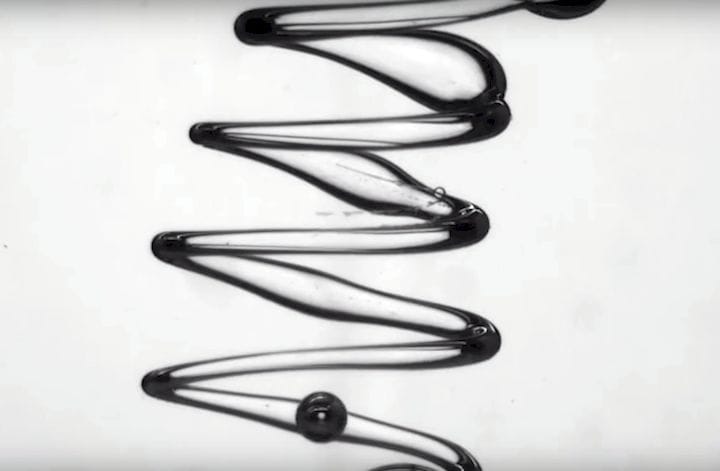![This is 3D printed water! [Source: Berkeley Lab]](https://fabbaloo.com/wp-content/uploads/2020/05/image-asset_img_5eb0a2ab193fe.jpg)
In a most bizarre 3D printing scenario, researchers have developed a way to 3D print liquids.
Researchers at the US Department of Energy’s Lawrence Berkeley National Laboratory found a way to 3D print stable liquid structures using modified conventional 3D printing equipment.
I suspect you are wondering whether this makes any sense at all, since by definition liquids cannot have structure; making anything out of a liquid would quickly result in a messy puddle, even before you finish making it.
But the Berkeley Lab researchers discovered a very interesting approach: they inserted a needle-like syringe into a stable container of silicone oil. Then through the syringe they inserted plain water. By moving the syringe through three axes of movement, they were able to create stable water structures within the oil.
![A “supersoap” layer sheaths water structures from surrounding oil [Source: Berkeley Lab]](https://fabbaloo.com/wp-content/uploads/2020/05/image-asset_img_5eb0a2ab73f11.jpg)
The oil and water did not mix for obvious reasons, but the researchers developed a way to sheath the water structures with a kind of soap mixture that interfaces between the oil and water. They explain:
“For the first step, the scientists developed a way to sheathe tubes of water in a special nanoparticle-derived surfactant that locks the water in place. The surfactant, essentially soap, prevents the tubes from breaking up into droplets. Their surfactant is so good at its job, the scientists call it a nanoparticle supersoap.
The supersoap was achieved by dispersing gold nanoparticles into water and polymer ligands into oil. The gold nanoparticles and polymer ligands want to attach to each other, but they also want to remain in their respective water and oil mediums.”
Of course, if you were to stir the oil, you’d quickly mess up the delicately printed liquid water structure. But as long as you maintain the structural integrity of the oil, you can maintain the water structure.
I imagine this could be done by enclosing the oil in a permanently sealed container that would prevent mixing of the oil and water.
Why do this? There seems to be several potential styles of application. They explain:
“They envision their all-liquid material could be used to construct liquid electronics that power flexible, stretchable devices. The scientists also foresee chemically tuning the tubes and flowing molecules through them, leading to new ways to separate molecules or precisely deliver nanoscale building blocks to under-construction compounds.
The researchers have printed threads of water between 10 microns and 1 millimeter in diameter, and in a variety of spiraling and branching shapes up to several meters in length. What’s more, the material can conform to its surroundings and repeatedly change shape.”
That is one of the main advantages: liquids are flexible. If the container was made from an appropriately flexible material, the liquid mechanism could be bent or twisted. This motion capability could certainly enable some unusual applications.
I’d never imagined 3D printing in liquids, and certainly not doing so for practical advantage. In fact, we even made fun of the concept a few years ago in an April Fool’s Day post talking about the NEMO, a hypothetical water printer.
Now it seems they’ve made that fantasy a reality, and 3D printing liquids is catching on.
Via Berkeley Lab











A research thesis details the incredibly complex world of volumetric 3D printing. We review the highlights.